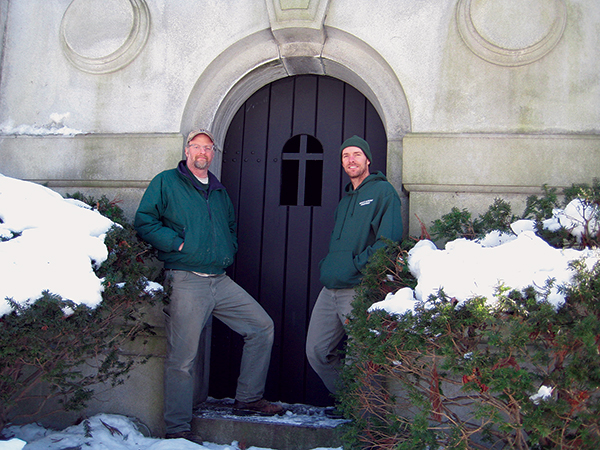
A century-old wooden door at one of the country’s most historic cemeteries recently underwent a renovation to restore it to its former glory.
Mount Auburn Cemetery in Cambridge, Massachusetts, was founded in 1831 as the first “landscaped cemetery” in the United States. The cemetery does an annual survey to evaluate the state of the monuments and grounds, then prioritizes restoration projects, many of which relate to maintaining stone. However, a couple of years ago, a wooden door leading into the Bourne Family Tomb was chosen for a restoration focus.
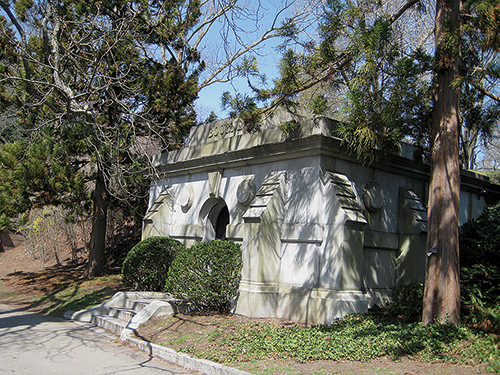
Mary M. Bourne purchased a 2,073-square-foot lot on February 14, 1867. Construction began in 1867, and the tomb’s first use was in 1881. It cost $30,000 and was the most expensive tomb at Mount Auburn at that time.
According to Steve Brown of the cemetery’s preservation department, “At some point in the first half of the 20th century, the heavy wooden door replaced an ornate marble door which was in bad shape.” The white oak door is 50″ wide by 96″ tall and 2-1⁄2″ thick. Moving it indoors for restoration “was definitely a two-man job,” says Steve.
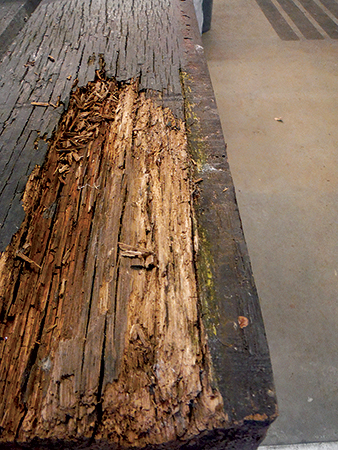
The door suffered from age and water damage: snow and rain had wicked into it through the end grain. The bottom 3″ had rotted and the wood was warped and sagging.
Retain Original Materials
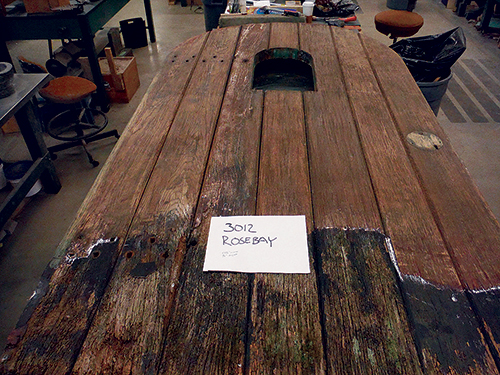
Steve and partner Greg Ghazil are both graduates of the Preservation Carpentry program at Boston’s North Bennet Street School. That experience, Greg said, “gave us a certain training and mindset towards restoration. Our goal was to remove the least amount of original materials.” They did strip off several coats of paint, using Dumond® Peel Away® Marine Safety Strip, finding some beautiful wood underneath.
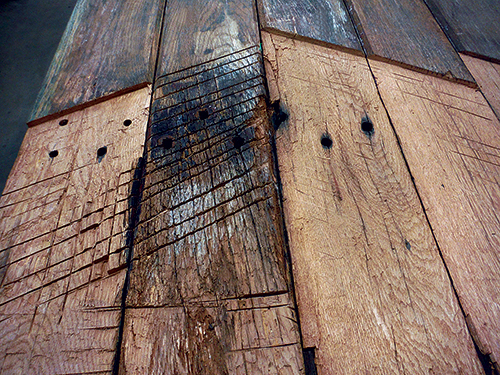
Steve and Greg said the restoration of the door required “the removal of the failed material back to solid material.” They cut the bottom 30” of the door in a pyramid pattern to make a Dutchman’s patch on the door panels. Pieces were attached to either connect or cover a panel.
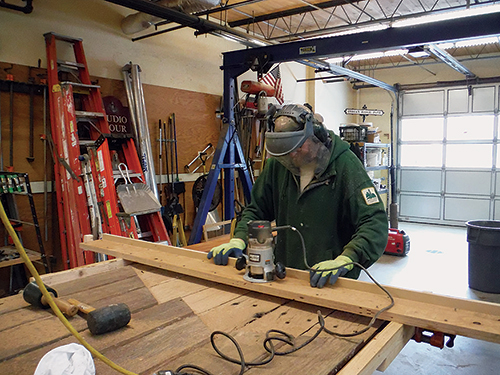
Greg found out after beginning to work with the new wood, that “its latent energy made it very hard to cut. Stabilizing its tension activity became part of the project.” They did this by placing side panels to hold the wood. Greg says, “Major care and attention had to be done with the router jig; it had to be timed out to an even depth. This was probably the most difficult part of the project. If the router dropped, we would be in trouble.”
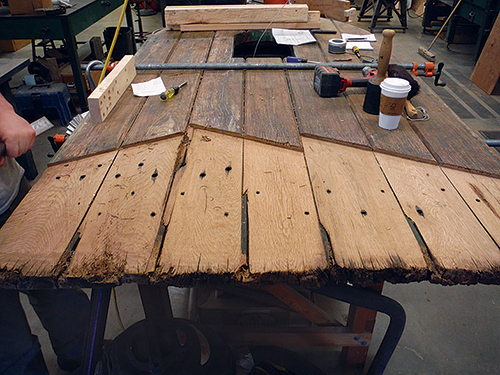
The entire job took two weeks. Both men said, “We were troubleshooting as we went along. We had to build up the ends, and take care to get the right height for every panel.” To further complicatethe job, they found that the tongue-and-grooves in the door had different widths in the door panels. When they reached the correct stage of the work, they hogged out the wood using chisels and mallets. Then they used the router to give a more finished surface.
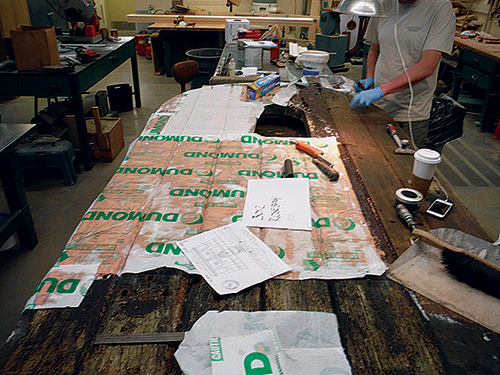
Steve says, “We decided to paint the door because it was painted previously and we wanted to keep our repair and rehabilitation of the door true to its original design.” They applied several primer coats using California Paints Acrylic Latex Trouble Shooter Primer. Then they did a flat black final coat using California Paints Exterior Acrylic Latex Paint. They also restored the iron knocker along with the metal plate under it and a black iron cross on the door’s window.
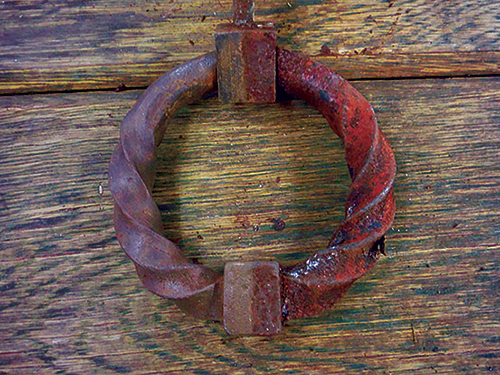
Greg says, “Our jobs at Mount Auburn are a nice balance of hands and brain. I love working with my hands, and the variety of projects here offers a constant challenge. Every project has a different set of issues to resolve.”
The Bourne Tomb, with its restored door, is located on Oxalis Path within Mount Auburn Cemetery.You can find more information about visiting Mount Auburn at www.mountauburn.org or by calling 617-547-7105.






